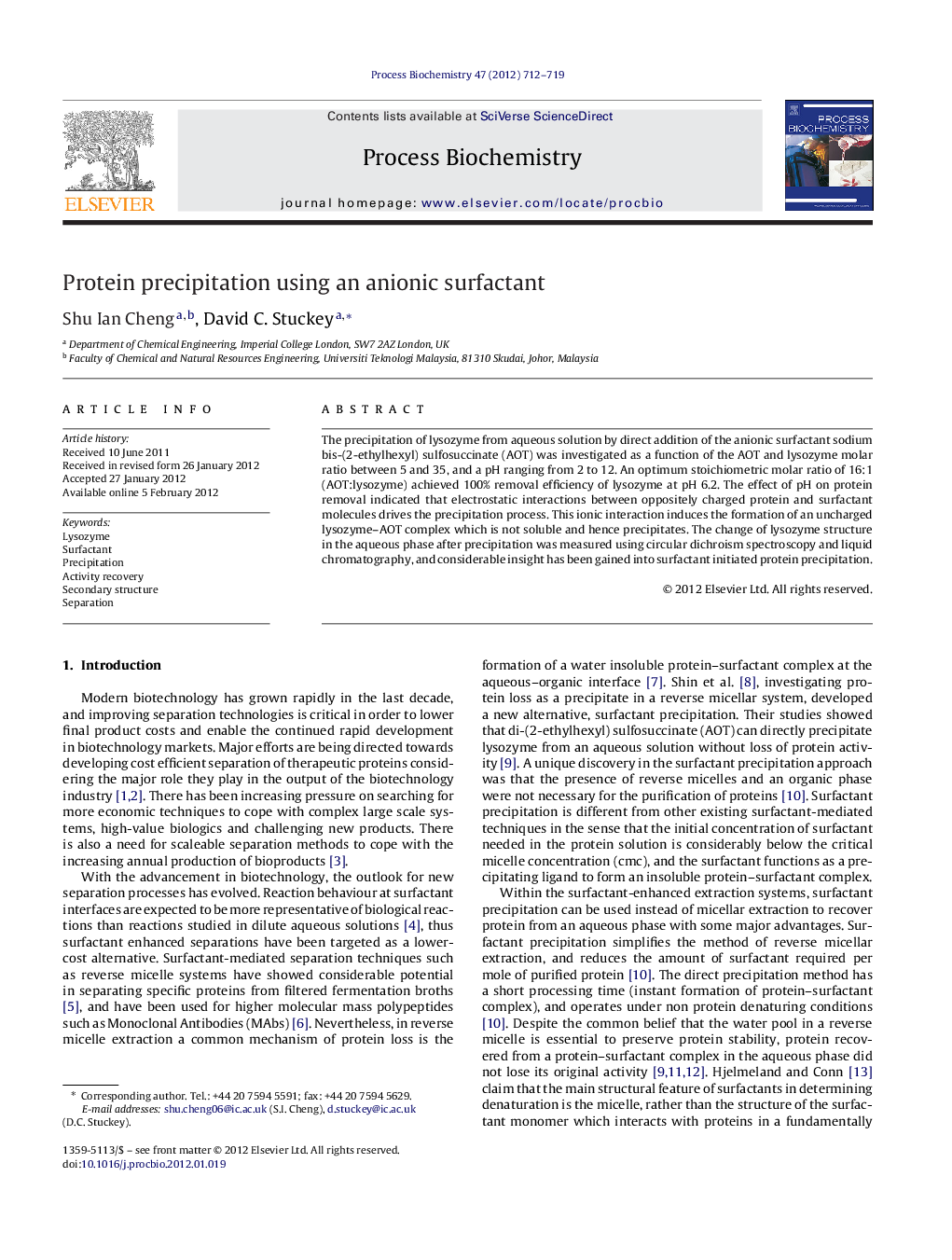| Article ID | Journal | Published Year | Pages | File Type |
|---|---|---|---|---|
| 34563 | Process Biochemistry | 2012 | 8 Pages |
The precipitation of lysozyme from aqueous solution by direct addition of the anionic surfactant sodium bis-(2-ethylhexyl) sulfosuccinate (AOT) was investigated as a function of the AOT and lysozyme molar ratio between 5 and 35, and a pH ranging from 2 to 12. An optimum stoichiometric molar ratio of 16:1 (AOT:lysozyme) achieved 100% removal efficiency of lysozyme at pH 6.2. The effect of pH on protein removal indicated that electrostatic interactions between oppositely charged protein and surfactant molecules drives the precipitation process. This ionic interaction induces the formation of an uncharged lysozyme–AOT complex which is not soluble and hence precipitates. The change of lysozyme structure in the aqueous phase after precipitation was measured using circular dichroism spectroscopy and liquid chromatography, and considerable insight has been gained into surfactant initiated protein precipitation.
► Structural features of surfactant monomers do not determine denaturation. ► Electrostatic interactions promote lysozyme stability in monomeric binding region. ► Hydrophobic bonds with surfactant ligand alter lysozyme conformation. ► Lysozyme structure in submicellar concentrations of AOT is dependent on pH.
